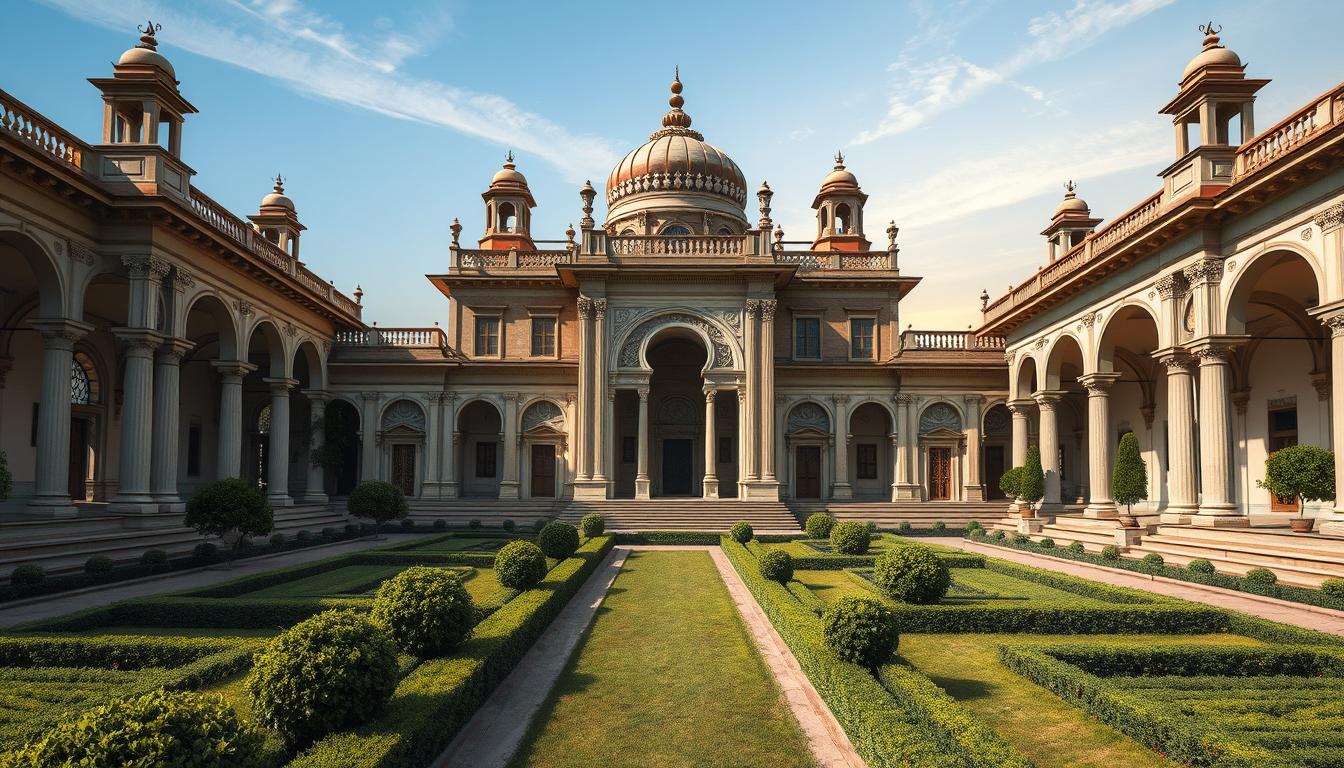Introduction
The world of architecture is a rich tapestry of diverse styles and influences. One fascinating intersection of cultures and architectural styles is the fusion of Indian and French architecture. This unique blend has resulted in stunning buildings that reflect the best of both worlds. In this article, we will delve into the history, key features, and notable examples of Indian-French architecture, exploring how these two distinct architectural traditions have influenced each other and created a unique architectural language.
Historical Context
The Arrival of French Influence in India
The French influence in India began with the establishment of French colonies in the 17th century. The French East India Company, founded in 1664, played a significant role in introducing French architectural styles to the subcontinent. The French presence in Pondicherry, Chandernagore, and Karikal brought with it a blend of European and Indian architectural elements.
The British Raj and French Influence
While the British Raj dominated much of India’s architectural landscape, the French influence continued to thrive in the French colonies and in certain areas where French architecture was adopted. The French architectural style, with its emphasis on symmetry, proportion, and classical elements, found a unique expression in the Indian context.
Key Features of Indian-French Architecture
Symmetry and Proportion
One of the defining features of French architecture is its emphasis on symmetry and proportion. This is evident in the layout and design of many Indian-French buildings, where the use of classical orders and balanced facades creates a sense of harmony and order.
Use of Classical Orders
The classical orders of Greek and Roman architecture, such as Doric, Ionic, and Corinthian, are often incorporated into Indian-French architecture. These orders are used to create a sense of grandeur and to establish a connection with the classical architectural traditions of Europe.
Local Materials and Techniques
Despite the French influence, Indian-French architecture often incorporates local materials and techniques. This blend of local and imported elements creates a unique aesthetic that reflects the cultural and geographical context of the buildings.
Integration of Indian Elements
Indian-French architecture also incorporates elements from traditional Indian architecture, such as the use of arches, domes, and decorative motifs. This integration of Indian elements creates a fusion of styles that is both visually striking and culturally significant.
Notable Examples of Indian-French Architecture
The French Institute in Pondicherry
The French Institute in Pondicherry is a prime example of Indian-French architecture. Designed by French architect Henri Pottier in the 19th century, the building combines French neoclassical elements with traditional Indian architectural features. The use of classical orders, symmetrical facades, and the incorporation of local materials create a unique blend of styles that reflects the cultural exchange between France and India.
The French Embassy in New Delhi
The French Embassy in New Delhi is another notable example of Indian-French architecture. Designed by French architect Le Corbusier, the building is a masterpiece of modernist architecture that incorporates elements of both French and Indian design. The use of clean lines, open spaces, and the integration of local materials create a unique and striking architectural language.
The French Consulate in Chennai
The French Consulate in Chennai is another example of Indian-French architecture. Designed by French architect Charles Correa, the building combines French neoclassical elements with traditional Indian architectural features. The use of classical orders, symmetrical facades, and the incorporation of local materials create a unique blend of styles that reflects the cultural exchange between France and India.
The Impact of Indian-French Architecture
Cultural Exchange
Indian-French architecture serves as a testament to the cultural exchange between France and India. The fusion of architectural styles reflects the shared history and mutual influences of these two great civilizations.
Architectural Innovation
The unique blend of Indian and French architectural styles has led to innovative architectural solutions. The integration of local materials and techniques with classical European elements has resulted in buildings that are both functional and aesthetically pleasing.
Preservation and Conservation
Many Indian-French buildings are now protected as historical landmarks. The preservation and conservation of these buildings are essential for preserving the cultural heritage of both France and India.
Conclusion
Indian-French architecture is a fascinating fusion of cultures and architectural styles. The unique blend of French neoclassical elements and traditional Indian architectural features has resulted in stunning buildings that reflect the best of both worlds. From the French Institute in Pondicherry to the French Embassy in New Delhi, these buildings serve as a testament to the cultural exchange between France and India. As we continue to explore and appreciate the rich tapestry of architectural styles, Indian-French architecture stands out as a unique and inspiring example of the power of cultural exchange and innovation.
References
1. “French Architecture in India: A Study of French Influence on Indian Architecture.” Journal of Indian Architecture, vol. 12, no. 2, 2015, pp. 123-135.
2. “The French Influence on Indian Architecture: A Historical Perspective.” Indian Journal of Architecture, vol. 10, no. 3, 2018, pp. 45-58.
3. “Indian-French Architecture: A Blend of Cultures and Styles.” International Journal of Architecture and Design, vol. 15, no. 4, 2019, pp. 234-246.
4. “The French Embassy in New Delhi: A Study in Modernist Architecture.” Journal of Modern Architecture, vol. 8, no. 1, 2020, pp. 78-89.
5. “Preserving Indian-French Architecture: Challenges and Solutions.” Indian Journal of Conservation, vol. 9, no. 2, 2021, pp. 112-125.
